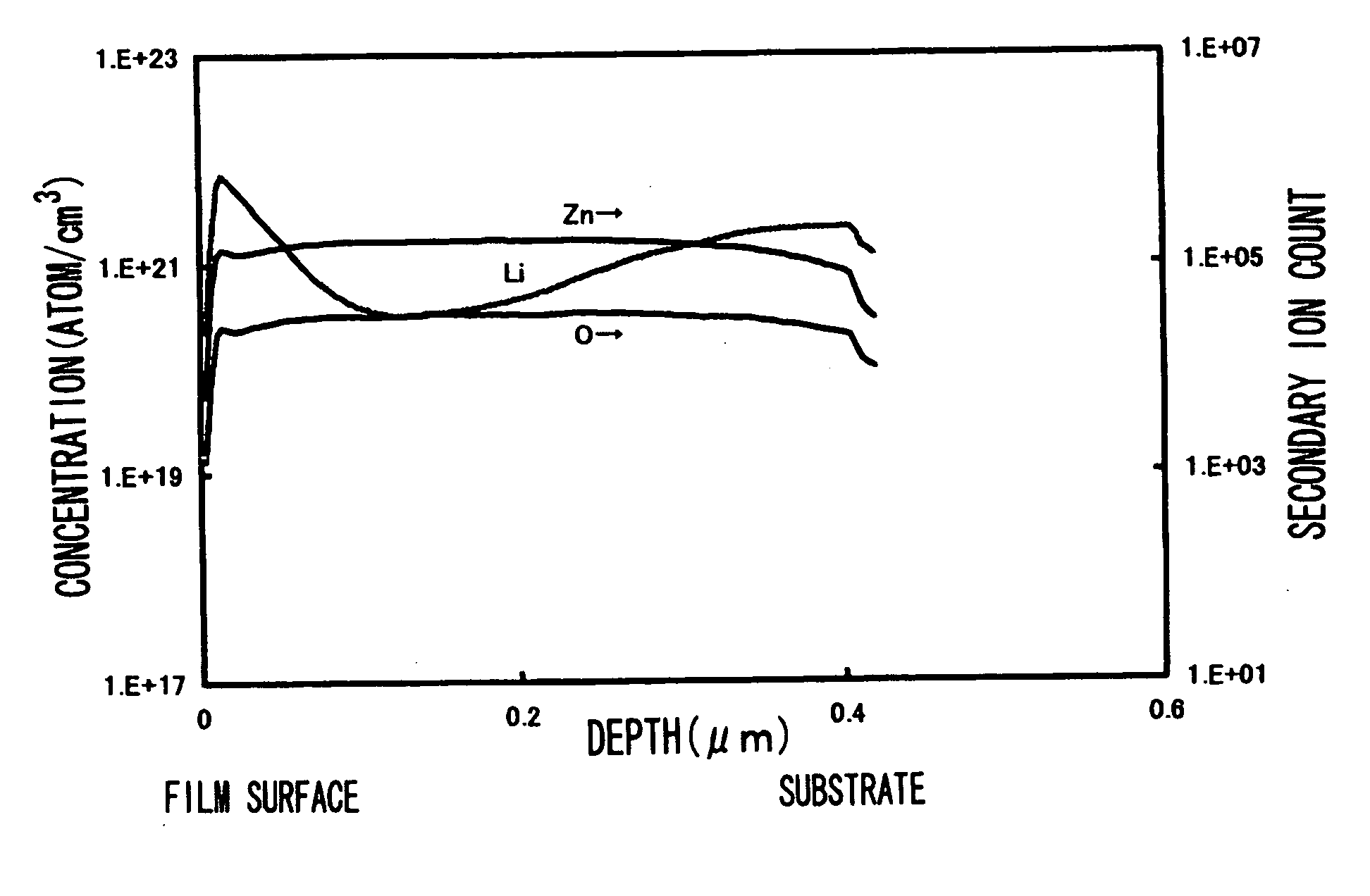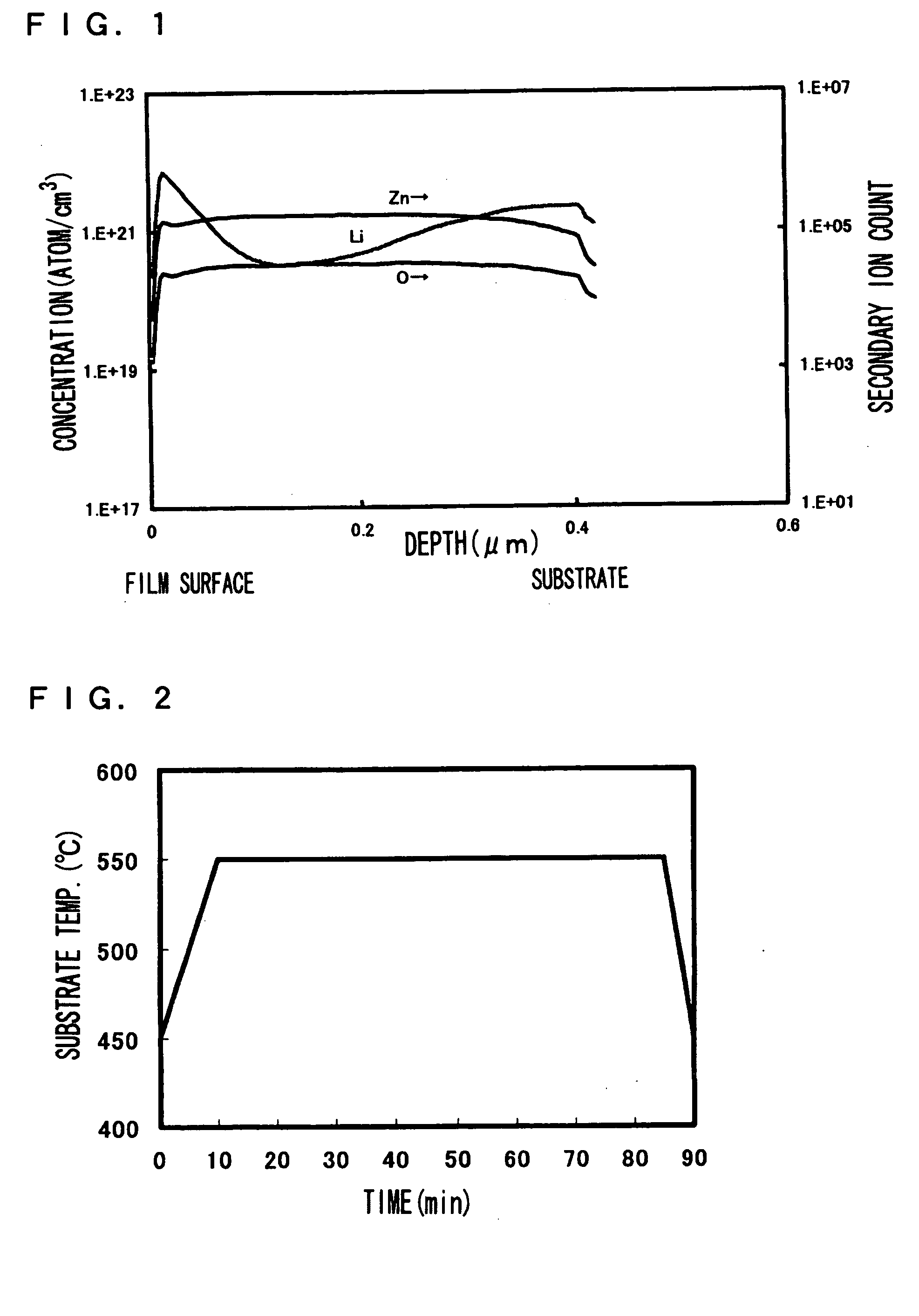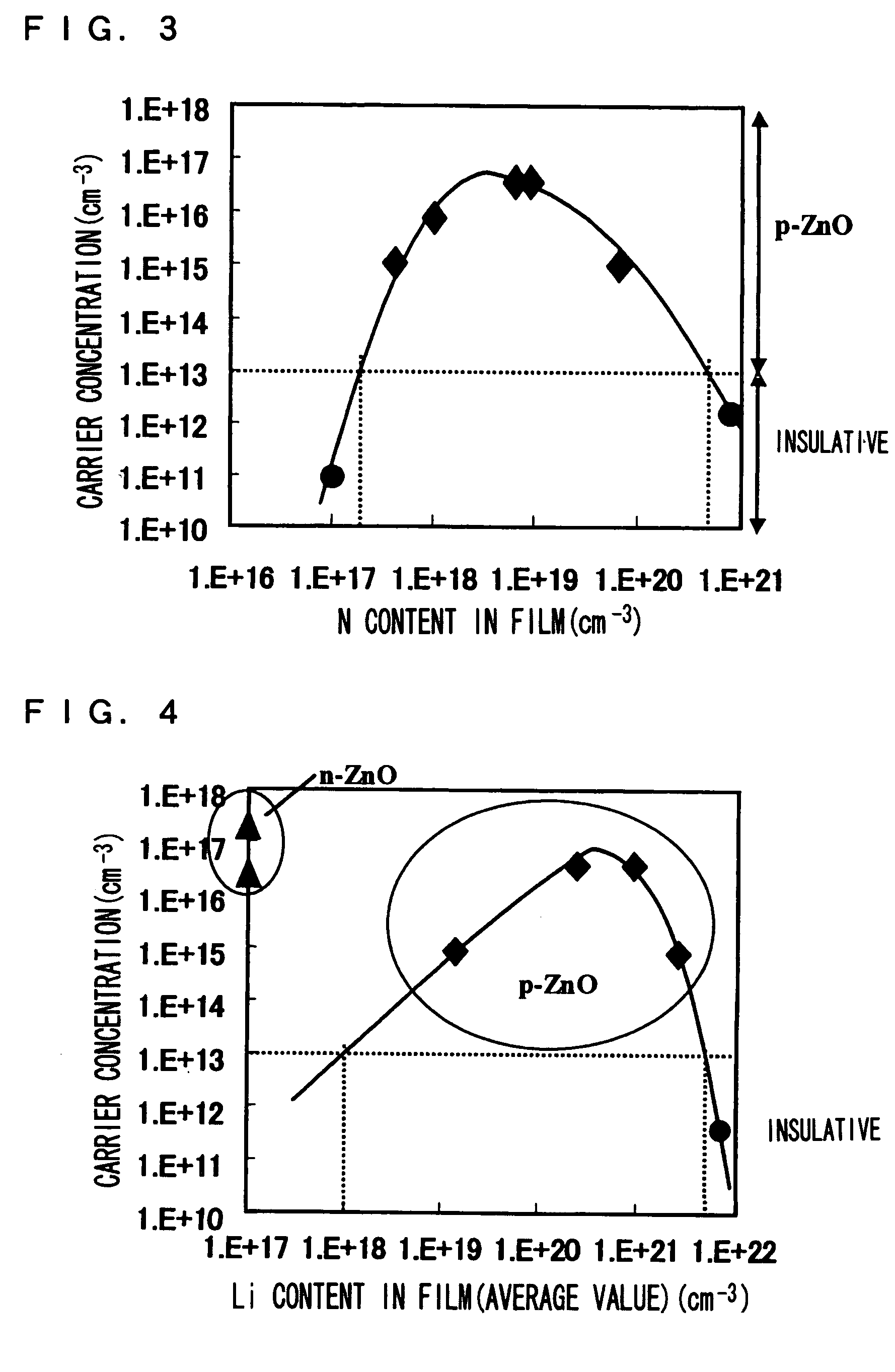P-type zinc oxide semiconductor film and process for preparation thereof
a technology of zinc oxide and semiconductor film, applied in the direction of conductors, non-metal conductors, condensed vapors, etc., can solve the problem of rendering them insulativ
- Summary
- Abstract
- Description
- Claims
- Application Information
AI Technical Summary
Benefits of technology
Problems solved by technology
Method used
Image
Examples
example 1
[0029] Using the apparatus shown in FIG. 5, a ZnO semiconductor film doped with lithium and nitrogen was formed on a c-plane sapphire substrate. Referring to FIG. 5, a vacuum chamber 1 houses a substrate 3 held on a substrate holder 4 and a target 2 located to oppose to the substrate 3. A laser 11 emits a laser beam 7 which is reflected at a sequence of lenses 9 and 10, passes through a focusing lens 8 and then enters the vacuum chamber 1 where the target 2 is illuminated at its surface. A plume 6 is produced on the surface of the target 2 illuminated with the laser beam 7. Although not shown in FIG. 5, N (nitrogen) radicals 5 from an N radical source are introduced into the vacuum chamber 1.
[0030] Using the apparatus shown in FIG. 5, a p-type ZnO semiconductor film was formed under the following forming condition 1. The formed p-type ZnO semiconductor film was about 400 nm thick.
[0031] (Forming Condition 1) [0032] Forming method: PLD (pulsed laser deposition) method [0033] Target...
example 2
[0061] As shown in FIG. 2, the substrate temperature was controlled at relatively lower levels during the initial and final stages of film formation. Otherwise, The procedure of the preceding Example 1 was followed to form a ZnO film.
[0062] The resulting p-type ZnO film had a carrier concentration of 4×1016 cm−3 and showed a further property improvement over that obtained in Example 1.
[0063]FIG. 1 is a graph showing an Li concentration profile in the thin film, when measured by SIMS. As shown in FIG. 1, the lithium content in the thin film is higher at locations closer to the film surface and the substrate surface. This is believed due to the substrate temperature that is controlled at lower levels during the initial and final stages of thin-film formation. The reason for the improvement in film properties when the lithium content is rendered higher at locations closer to the film surface and the substrate surface is most probably because a larger proportion of donor defects which...
example 3
[0065] The influence of the carrier concentration on film properties was studied by varying a nitrogen content (amount of N) in a p-type ZnO semiconductor film.
[0066] The below-specified forming condition 4 was utilized to form a thin film. The nitrogen content in the thin film was varied by controlling an N radical source RF power and a substrate temperature. The nitrogen content in the film tends to increase with the higher N radical source RF power and decrease with the higher substrate temperature.
[0067] (Forming Condition 4) [0068] Forming method: PLD method [0069] Target: Li-doped ZnO target (Li content: 5 weight %) [0070] Laser: ArF laser [0071] Laser power: 1 J / cm2 [0072] Substrate temperature: 400-650° C. [0073] Chamber pressure: 3×10−2 Pa [0074] N2 gas flow rate: 5 sccm [0075] N radical source RF power: 50-500 W [0076] (wherein the substrate temperature, while given above by the maximum value shown in FIG. 2, is controlled at a level 100° C. lower than the maximum level ...
PUM
| Property | Measurement | Unit |
|---|---|---|
| Carrier concentration | aaaaa | aaaaa |
| Carrier concentration | aaaaa | aaaaa |
| Temperature | aaaaa | aaaaa |
Abstract
Description
Claims
Application Information
 Login to View More
Login to View More - R&D
- Intellectual Property
- Life Sciences
- Materials
- Tech Scout
- Unparalleled Data Quality
- Higher Quality Content
- 60% Fewer Hallucinations
Browse by: Latest US Patents, China's latest patents, Technical Efficacy Thesaurus, Application Domain, Technology Topic, Popular Technical Reports.
© 2025 PatSnap. All rights reserved.Legal|Privacy policy|Modern Slavery Act Transparency Statement|Sitemap|About US| Contact US: help@patsnap.com



